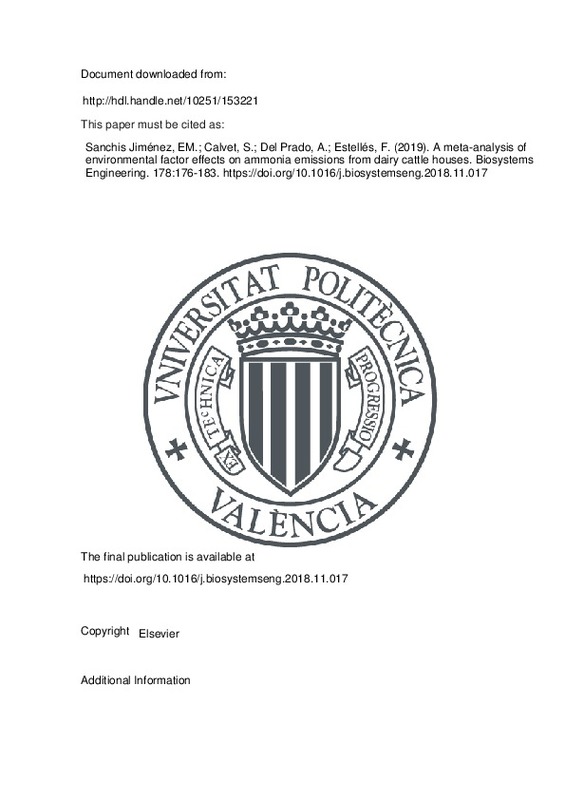JavaScript is disabled for your browser. Some features of this site may not work without it.
Buscar en RiuNet
Listar
Mi cuenta
Estadísticas
Ayuda RiuNet
Admin. UPV
A meta-analysis of environmental factor effects on ammonia emissions from dairy cattle houses
Mostrar el registro completo del ítem
Sanchis Jiménez, EM.; Calvet, S.; Del Prado, A.; Estellés, F. (2019). A meta-analysis of environmental factor effects on ammonia emissions from dairy cattle houses. Biosystems Engineering. 178:176-183. https://doi.org/10.1016/j.biosystemseng.2018.11.017
Por favor, use este identificador para citar o enlazar este ítem: http://hdl.handle.net/10251/153221
Ficheros en el ítem
Metadatos del ítem
| Título: | A meta-analysis of environmental factor effects on ammonia emissions from dairy cattle houses | |
| Autor: | Del Prado, Agustín | |
| Entidad UPV: |
|
|
| Fecha difusión: |
|
|
| Resumen: |
[EN] Livestock housing is one of the main sources of ammonia (NH3) emissions from agriculture.
Different management and environmental factors are known to affect NH3 emissions from
housing systems. The aim of this study ...[+]
|
|
| Palabras clave: |
|
|
| Derechos de uso: | Reserva de todos los derechos | |
| Fuente: |
|
|
| DOI: |
|
|
| Editorial: |
|
|
| Versión del editor: | https://doi.org/10.1016/j.biosystemseng.2018.11.017 | |
| Código del Proyecto: |
|
|
| Agradecimientos: |
This study is part of the project OPTIBARN and was financially supported by the Instituto Nacional de Investigacion y Tecnologia Agraria y Alimentaria through the research grant 618105 FACCE Era Net Plus - Food Security, ...[+]
|
|
| Tipo: |
|







![[Cerrado]](/themes/UPV/images/candado.png)


